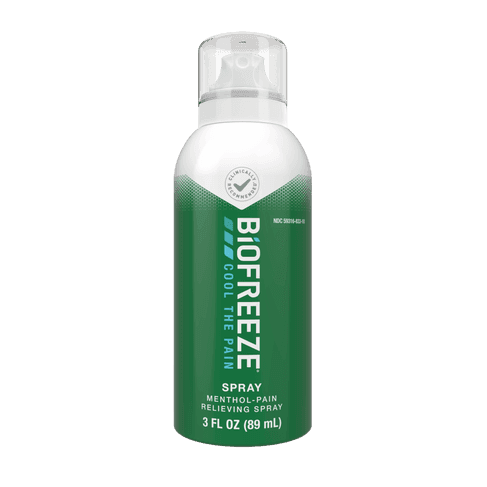Mess-Free Application
Easily Covers Small & Large Areas
Long Lasting

This article has been medically reviewed for accuracy
What is cold therapy and what does cold therapy do?
The underlying science behind cold therapy involves exposing the body, or a body part, to extremely cold temperatures, which may help relieve pain. This happens because the cold causes blood vessels to constrict1A,2A, which reduces blood flow. This reduction in blood flow could theoretically reduce inflammation and pain around the site of an injury or strain.
In this guide, we cover some common cold therapy options, the various pain-relief benefits of cold therapy, and any potential side effects to help you determine whether cold therapy is right for you.
There are many forms of cold therapy. Below are a few of the more common types of cold therapy available.
A cold compress, or an ice pack, is an easy way to do cold therapy at home.
If you don’t have an ice pack, you can also use a bag of frozen peas or vegetables.
Cold water therapy3 includes different forms of cold-water immersion—cold plunges in a pool or lake, ice baths, or cold showers.
An ice massage involves massaging an ice cube (or using a cryocup) that is wrapped in a cloth or is covered directly on the site of pain.
The skin will feel extremely cold and then numb. Do not apply ice directly to the skin and do not continue an ice massage once you��’ve reached a point of numbness.
Using topical cooling agents like Biofreeze’s Menthol Pain-Relieving Gel as directed can provide temporary relief for minor muscle and joint aches and pains.4
Even more conveniently, Biofreeze’s pain relief products come in a variety of forms and applications (sprays, patches), so there are several options to suit your pain relief needs.
Cold therapy has been gaining popularity thanks to its various health benefits, particularly for muscle pain relief.
If you have sore muscles, a muscle sprain, or lower back pain, you might find cold therapy helpful.
Your guide to muscle pain relief
Below are three ways that cryotherapy can help you better manage your muscle injuries or pain.
Cold exposure therapy like cryotherapy and ice application aims to reduce inflammation and swelling due to muscular injuries by constricting blood vessels and reducing blood flow. This will numb the injured area, reducing pain.2B
Although the inflammation-reduction effects of cold therapy have been explored in animal studies of muscle injury5, there is the need for robust randomized controlled studies of cold therapy in humans.
One of the major benefits of cold therapy is its role in pain management. Data from one study involving the cold application icing of the ankles of adult male sports players, suggests that cold therapy increases one’s pain threshold and pain tolerance1B, 2C by reducing nerve conduction velocity (NCV). This is the speed at which electrical impulse move through a nerve6.
In other words, applying ice to an injury reduces the speed of nerve activity, and potentially the speed of pain signals firing in the body7. This might be why our pain perception is lowered during cold therapy.
Delayed onset muscle soreness (DOMS) is extreme muscle soreness experienced in the hours, or even days, after an intense workout. DOMS can make it too painful to move the affected muscle, reducing your range of motion.
A meta-analysis of 32 randomized controlled trials found that using cold therapy application within one hour after exercising, can reduce the degree of pain caused by delayed onset muscle soreness (DOMS) within 24 hours.8
To learn more about muscle pain relief after exercising, check out our guide here.
As beneficial as cold therapy may be, there are also potential side effects, particularly when you don’t take the proper precautions before engaging in cold therapy. If you have any questions or concerns, it is recommended to speak with your healthcare provider.
Mess-Free Application
Easily Covers Small & Large Areas
Long Lasting
Mess-Free Application
Hard to Reach Areas
Powerful
Cold therapy is not always the right choice of treatment. If you have any of the following conditions below, do not use cold therapy. Speak with your doctor if you are pregnant or breast-feeding before using a menthol-based gel.
If you have any hesitations about using cold therapy, consult with your doctor beforehand to avoid injury or a more fatal condition.
This article has been medically reviewed for accuracy


Mess-Free Application
Easily Covers Small & Large Areas
Long Lasting
Mess-Free Application
Hard to Reach Areas
Powerful
